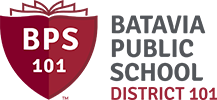Special Education Services
Multi-tiered System of Support (MTSS)
A Multi-Tiered System of Supports (MTSS) is a term used to describe an evidence based model of schooling that uses data-based problem-solving to integrate academic and behavioral instruction and intervention. The integrated instruction and intervention is delivered to students in varying intensities (multiple tiers) based on student need. “Need-driven” decision-making seeks to ensure that district resources reach the appropriate students at the appropriate levels to accelerate the performance of ALL students to achieve and/or exceed proficiency. MTSS allows educators to judge the overall success of their school system, but examining data in an on-going, systematic manner. The idea is to ensure all students reach expectations set for by the Common Core State Standards and are college and career ready.
MTSS and RtI are essential the same initiatives, but MTSS is a more accurate description of resource mapping. The goal is to all all students meet proficiency by the end of third grade, and remove the “wait-to-fail” phenomenon within a school system. MTSS framework is a set of evidence‐based practices and procedures in the areas of curriculum, instruction and assessment. These practices are supported by research and promote the ability of the system to gather, analyze, and use data for the purpose of instructional decision making across all levels, including the classroom, school building, and district. MTSS focuses on three tiers of intervention:
Universal: For every student
Targeted: For those students who are struggling or need to be accelerated
Intensive: For students who are significantly behind/ahead and targeted interventions did not support
How Does MTSS Help us Do This?
Batavia schools have many skilled staff members and programs involved in the education of students. While the classroom teacher plays the lead role, he or she has others team members to assist with each student’s social and academic growth. These team members may be reading specialists, social workers, speech/language pathologists, special education teachers, paraprofessionals or other support staff. MTSS is a way for school teams to work together to ensure that:
- Students who need additional support are identified early
- Students identified as needing more support are provided support targeted at their specific needs using research-based strategies and programs
- Students progress is monitored frequently so that we know if the interventions are working
- Teachers and School Teams use data to change interventions when needed
- Schools have a system of support to assist teachers and students in this process
What Does MTSS Look Like at My Child’s School?
| Universal Screening | Universal screenings are assessment tools used to determine students who may need further instructional interventions beyond the core curriculum. In Batavia all students in grades kindergarten through 2nd grade are screened in math and reading using AimsWeb and IGDIs in Early Childhood. This assessment provides us with a quick picture of each child’s skill level in both reading and math. In addition to AimsWeb, students in grades K-9 also take the Measures of Academic Progress (MAP) test 3 times per year. The MAP test helps us to ensure that all of our students are showing academic growth throughout the school year. Some of our buildings also use universal screeners to identify students who are struggling socially or emotionally and may need support from the School Social Worker. |
| Grade Level Teams | Grade level teams in grades EC-9 meet regularly to review each student’s progress in order to determine which students may need additional supports to be successful. They also review overall student progress to ensure that the core-curriculum is being delivered with fidelity. Grade level teachers work together to provide interventions to students who are not making adequate progress. |
| Intervention Time | Students in grades EC-8 have a set time of day to receive interventions. At the elementary level this is called WIN (What I Need) at the middle school level this is called X-Time. During this time classroom teachers and specialists work together to provide reading and math interventions to students who were identified through the universal screening process. |
| Building Level Intervention Team (BLIT) | Elementary Specific:
The Building Level Intervention Team (BLIT) is composed of a building administrator, School Psychologist, Reading Specialist, Social Worker and Speech Pathologist in addition to a grade level representative. This team meets approximately one time a month to review student growth data for groups of students receiving interventions in areas of identified need. Secondary Specific: The BLIT team is comprised of grade level counselors, School Psychologists, ELL specialist, and the student service administrator. Other specialists including the Social Worker, Speech Pathologist, Reading/Math Specialist, and a variety of administrative staff attend based on the student data being shared and intervention groups discussed. All levels: The BLIT team task is to carefully review the progress monitoring data to determine if the child is meeting or exceeding grade level growth expectations in the specific deficit area. If a child is not making expected growth, the BLIT team will make specific recommendations on next steps to support the student such as an intervention change, or more diagnostic assessments to learn more about their profile. |
| Progress-
Monitoring |
Progress-monitoring is a process used to assess students’ performance and evaluate the effectiveness of instruction and/or interventions. Progress-monitoring tools such as AimsWeb are used every 2 weeks to monitor students that are participating in interventions (K-8). Early Childhood students are monitored using Teaching Strategies Gold checkpoints. |
| Data Days | Teachers and Specialists in grades EC-9 participate in data days 3 times per year. Data days give our teams a chance to review each student’s progress. Our goal is to ensure that ALL of our students are growing socially and academically. We carefully review multiple pieces of data such as AimsWeb, MAP, and classroom performance to determine if our students need additional supports to be successful. |
| Next Steps | Some students need support beyond the general education setting. When students do not respond to interventions the team will work closely with the student’s parent/guardian to determine if a Special Education Evaluation is necessary. Batavia is proud to have a full-continuum of special education services to support our students with disabilities. |



